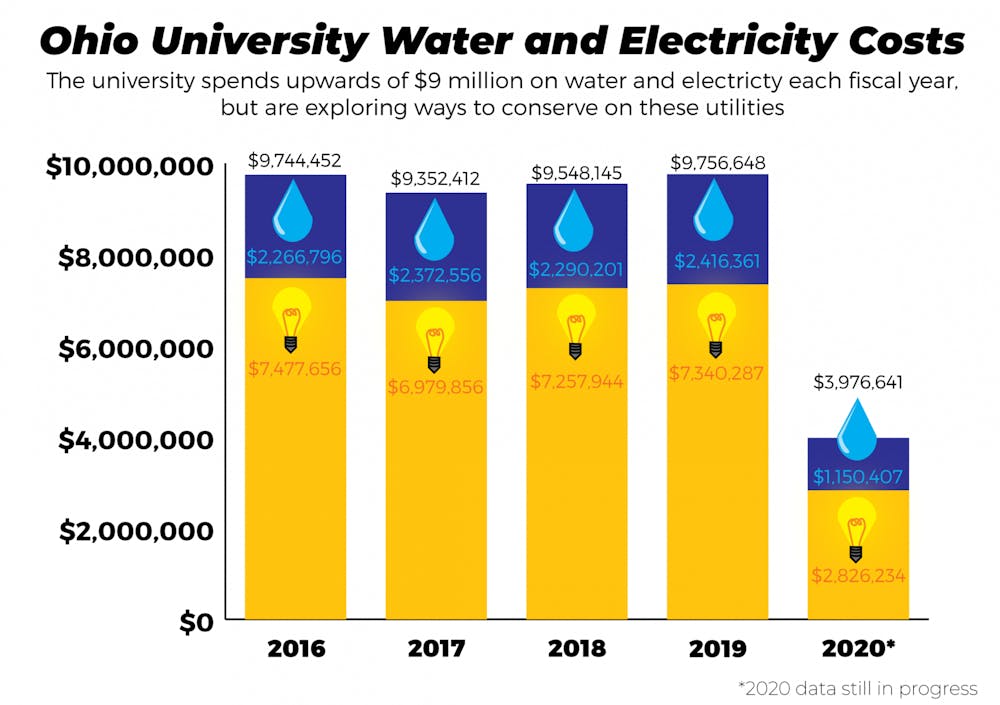Though it spends roughly about $900,000 per month on water and electricity, Ohio University has found ways to conserve its usage.
Utility costs and usage tend to go down in December when students are away from campus, but other measures help OU lower its energy usage.
For fiscal year 2019, electric usage totaled about 120 million kWh, bringing the total cost to about $7.3 million.
This is comparable to the three fiscal years before. 2017 was the lowest-costing fiscal year since 2016, with a total of about $7 million for electric usage.
Typically, water usage drops in March, and tends to be higher from September through November.
Electricity and water are both used to cool buildings in the summer, and the late summer, including September, can see some of the warmest temperatures annually, Jim Sabin, university spokesperson, said in an email.
The increased usage is caused by students returning to campus from summer break, Sabin said. Domestic water usage and the increased use of electric outlets cause the utilities bills to become more expensive.
Though water usage stayed consistent through 2016 and 2017, a decrease in usage can be seen in 2018.
Usage went from about 240,000 KGal in 2017 to 218,000 KGal in 2018. Usage continued to drop in fiscal year 2019 to 209,000 KGal, costing the university about $2.4 million.
This decrease in usage is the result of OU finding ways to curb excess use of water and electricity around campus.
For instance, since May 2017, trays have no longer been offered in dining halls.
A study conducted in 2016 by OU students found that it took about a third of a gallon of water to wash one tray, Sabin said.
“Last year, all three dining halls served 1,881,751 meals. Students who spearheaded a food waste education project for class in Spring 2016 observed that 71 percent of all students use a tray,” Sabin said in an email. “Using these assumptions, going trayless will save 440,894 gallons of water per year.”
When renovations are being made on campus, electric and water efficiency is taken seriously. All renovations must meet Leadership in Energy and Environmental Design, or LEED, ratings.
“All of our new buildings and our renovations that are over $2 million are required to be LEED certified … LEED building rating systems require minimum reductions in energy and water usage,” said Elaine Goetz, Director of Sustainability. “If we renovate a building we have to ensure that it reduces (water and energy).”






